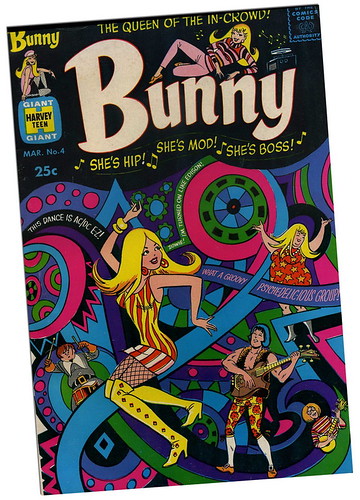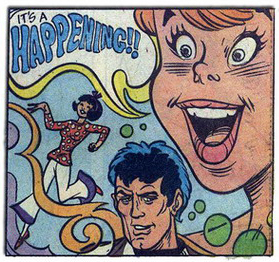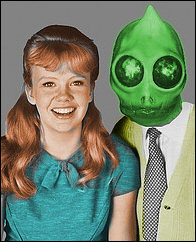 Harvey Comics was an interesting comic book company. Much has been written about them, but one thing to remember about the company is that they were early masters of crime, horror and gore comic books. Harvey changed the content of their magazines to that of being more suitable to children only as an effort to avoid being crushed by the external pressures of parent groups and politicians. It was a bold move that allowed them to outlast several other companies and the Harvey line created the memorable characters of Richie Rich and Casper.
Harvey Comics was an interesting comic book company. Much has been written about them, but one thing to remember about the company is that they were early masters of crime, horror and gore comic books. Harvey changed the content of their magazines to that of being more suitable to children only as an effort to avoid being crushed by the external pressures of parent groups and politicians. It was a bold move that allowed them to outlast several other companies and the Harvey line created the memorable characters of Richie Rich and Casper.
While on the surface the Harvey titles seemed benign a more adult eye would easily see themes that children did not. After all, comic books about a dead baby, a demon free to wreak havoc on Earth, a witch and an exploitative capitalist couldn't possibly be harmful, could they? While everyone knows about the more popular Harvey characters, one of their forgettable characters was Bunny Ball, teen sensation, successful model and a young woman with a name worthy of a Bond Girl.
Bunny also had a psychotically boy-hungry kid sister who bore the name of Honey. She was obsessed with discovering new ways to make boys like her. To me, a "Honey Ball" sounds like something involving many drunken co-eds on spring-break, but I digress. Bunny was one of those comic book attempts to cash in on the Archie dollars. DC and Marvel did the same thing with Binky, Patsy and Debi and the Harvey line was no different. Like their counterparts at the other companies the late 1960's was a schizophrenic time for teen-oriented comic books. The characters were often trapped between being the idealized Donna Reed archetype while at the same time trying to appeal to a young crowd being force-fed Mod styles and psychedelic imagery. In Bunny #4 (March 1968), the clothing styles and idioms of all the characters fluctuate over the course of several stories, bouncing from conservative 1950's to the hip 1960's and back again (this is likely due to the style of whatever artist happened to be on the pencil chores for any given story).
The entire series is odd and Bunny #4 itself is a very strange book. The issue is chock full of fetish imagery and hints of the seedy underbelly of the pornography industry of the late 1960's. One of the tales in Bunny #4 is about a "Happening" at the home of a member of the BBIC, the Bunny Ball "In" Club. The BBIC is a fan club for the Bunny readers that also appeared in stories.
The feature Yvoorg Nam (that's Zatanna-speak for Groovy Man) in Bunny #4 is uncredited but it looks to have been drawn by Ernie Colon, who did a lot of work for Harvey. This is one of those Seduction of the Innocent-type stories that has content that will sneak past a child but gets recognized for what it really is about by an adult. The story is about a drug dealer named Yvoorg Nam who visits the home of bored teenagers and dispenses to the gang plenty of psychotropic drugs. The kids have an LSD-fueled orgy and they even experience a bad trip, freaking out and taking the dealer hostage at one point. Yvoorg is well-rendered and is suspiciously detailed, more than the other characters (I suspect that Yvoorg has the features of a celebrity of the time or is someone the artist knows). I'm just giddy that Harvey comics was able to depict teens doing hard drugs in 1968 and they got away with it. And yes, it is Comics Code approved!
So click the picture to tune in, drop out and experience the entire groovy trip for yourself.
Wednesday, December 27, 2006
The Electric Bunny Acid Test
Posted by
Sleestak
at
12/27/2006 07:44:00 PM
![]()
![]()
Labels: Bunny Ball, Drugs, Harvey Comics, Seduction of the Innocent
Subscribe to:
Post Comments (Atom)




























You've got to be fucking kidding me. Wow. Just wow.
ReplyDeleteyvoorG naM has to be modeled on someone. Lou Reed, maybe? (Also, isn't "Nam" rather politically charged for 1968?"
That is so damn bizarre it leapfrogs over "condescending trivialization of teen culture by clueless adults" and lands right in the middle of hipsville.
ReplyDeleteI wasn't aware of the existence of this comic, thanks for posting. I think all of the underlying adult-themed double entendre you're pointing at is clearly there, but I'm not sure the editors were aware of it, if their market was really young teenagers (did older teens read comic books back then?) Of course, Barbie videos have some of the most inappropriate messages for young girls I can imagine, and Disney seems to be constantly promoting this idea of "princess" as the highest attainable status for girls.
ReplyDeleteI actually owned that comic back in the day. I remember thinking it was strange, but hey, I was a kid and everything was freakin' strange. I bought every issue I saw. I used to draw fashions for Bunny Ball but never got around to sending them in. Dunno why. Just too lazy.
ReplyDeleteI remember wondering about expressions like "yvoorg." I still do. What adult thought THAT was hip. 1960s and 70s hip-speak in comic books is a trip in itself. Chiefly made up by men who grew up in the 30s and the 40s.
I picked this comic book up years ago. I love these bizzare comics. The art for this story is by Hy Eisman. I was lucky enough to get the original art for this story!
ReplyDelete